We're all familiar with the role injectors and turbochargers play in increasing a diesel engine's horsepower. However, when camshafts and cylinder heads are thrown in the mix, the familiarity isn't nearly as strong for many enthusiasts. A Cummins engine's internal airflow—and methods of improving it—was the main topic of our recent discussion with Zach Hamilton, maker of the only high-performance, 12-valve cylinder head available for Cummins powerplants.
With questions that ranged from asking for details on the Hamilton head's design and development to querying Zach for his opinion on the best applications for using his cylinder head, the answers he gave us were insightful and very honest (honest to a point where Zach even shared that there are some engine setups that actually benefit more from a factory design than the full-tilt Hamilton castings).
Our afternoon closed with a dyno test of a 1996 Dodge Cummins topped with a Hamilton Cams cylinder head—and we saw for ourselves how it affected power output.
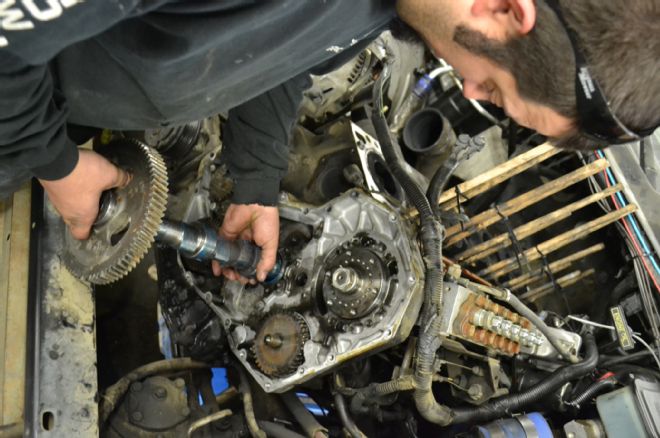
| Many options are available when ordering a 12-valve
head from Hamilton Cams, including a variety of valve sizes.
Diesel Power: There was a large group of people clamoring for a better-flowing cylinder head for the Cummins engine, and you finally decided to bite the bullet and make one. Tell us a little bit about that.
Zach Hamilton: When we first started doing cams, gains were easily had. But, as time passed, gains were starting to be harder to find. This put us on a search for what exactly was holding engines back from producing more power. After some research, it was pretty obvious that regardless of what we did with the cam, there was no way we could reach the engine's full potential unless we had a better option for the cylinder head.
DP: For everyone who said it would work, there seemed to be two people who said it wouldn't. A lot of people were very vocal at the beginning, claiming a cylinder head that flowed a lot more than the factory version wouldn't really help that much.
ZH: Many people tested ported OEM heads with little-to-no gains; many people tested performance cams with little-to-no gains. The common issue was mismatched combinations. People were trying performance heads with cams that were horrible, which masked any potential gains. People then tried really good cam profiles with anemic heads, which again masked their gains. Many people who had both really good heads and good cams, restricted their engine with mismatched turbos or incorrect injection tuning. When nobody agrees on the inhibiting factors to power production, it is sometimes tough to identify the solution.
DP: OK, so it was clear you still thought a higher-flowing head was a viable power-producing product. Tell us a little about the production and development of the Hamilton head.
ZH: We started to get an idea that the OEM head was not sturdy enough to handle the cylinder pressures or the heat in severe applications, especially after it had been ported to the point it was paper thin in some areas. So, the first thing to do was to get a thicker deck to make the cylinder head seal well and have a strong base. Second, we looked at common areas that failed when running high rpm and high temperatures. We added material along the exhaust side so that the manifold surface would not warp as badly, and around the exhaust ports so that extensive porting could be done.
At this point, once we had a solid foundation for keeping the head alive, it was time to work on the ports. At the time, Greg Young with ZZ Custom Fabrication was doing more with porting Cummins heads than just about anybody. He played with numerous port shapes until he got the flow characteristics he wanted. This required making the roofs of the intake ports solid, so they could be modified further if the customer wanted.
DP: And once the heads started rolling out, people were lining up to buy them, right?
ZH: (Laughs) No. After being cast, the heads did not sell...at all. The people who did test them found they did not work well with the large-duration cams on the market. As engine builders started to play with the port shape and cam profiles, a few things emerged. Instead of needing 90 psi to make 1,000 hp, people were starting to do it with 50 psi and then 45 psi. Lower boost allowed lower intake temperatures and a better environment for turbos to work in without being oversped or surged, which allowed full boost at lower rpm without falling under the charger—a very good thing for sled pulling.
DP: So you got your foot in the door in sled pulling, so to speak.
ZH: Yeah, at first, when engine builders started using our head on their engines, they were grinding all the casting IDs off, so that it appeared to be an OEM head, more or less. It was all very secretive. Once word got out that the heads were making power, though, they started to sell very well in competition applications.
DP: Now for the million-dollar question: How much power will it add to an existing 12-valve engine?
ZH: You can't really think of it in terms of adding a single part and getting a specific result. The engine has to be built with an entire philosophy in mind. Just adding this head to a 300 or 400hp street truck isn't going to work very well. You'd be better off with a factory head. As horsepower and rpm rises, the factory head becomes more and more of an airflow restriction, and gains become larger once the Hamilton head is added. On competitive, single-turbo sled pullers in the 2.6-and-above Classes we've seen 70 to 100hp gains; with the all-out, triple-turbo race engines, we've seen 300hp gains, once camshaft profiles and everything else is adjusted. Another thing to remember is that places like Nye's Automotive, Haisley Machine, Scheid Diesel, and Wagler Competition Products all custom tailor Hamilton castings for specific applications. With larger valves, more than 300 cfm is being achieved on the intake, which is quite a lot. These fully ported heads are being used on today's 2,500 to 3,000hp 12-valve Super Stock pulling engines.
DP: So what's in the crystal ball for the future? A 24-valve head? A Duramax head?
ZH: Currently, we're testing with aluminum castings, and larger valves and new, taller optimized ports are all on the table. The current holdup to ultimate power production in many cases is bore spacing. As more aftermarket blocks become available to push reliable bore size even larger, look for new cylinder heads with larger valves to push the power potential of these competition engines to new levels.
Testing the Hamilton Head
In many cases, journalists are just expected to take a manufacturer’s word that a product works, but Zach Hamilton was nice enough to send us one of his out-of-the-box, unported, 12-valve heads for testing against a stock version on a hot street truck. The truck had a single Garrett GTX4202 turbocharger on it regulated to 55 psi, along with a Columbus Diesel 13mm pump and Industrial Injection 5x25 injectors. We dyno’d the truck first at 654 hp and then fire-ringed the Hamilton head (for better sealing) and installed it on the truck. With the same 194/220 camshaft that was already in the truck, power picked up to 711 hp at the same 55 psi, netting an increase of 57 hp, or about what we expected based on Hamilton’s predictions.
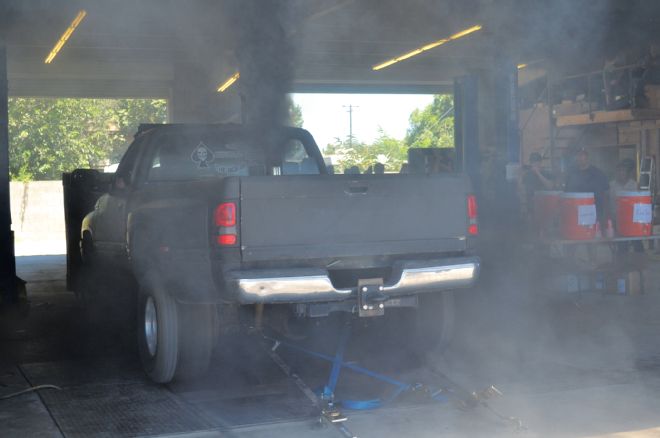
| Hamilton Cams 12 Valve Cummins Cylinder Head 12
Flow Numbers
Throughout this article, we’ve touted the Hamilton head as flowing much better than the factory version. We asked Zach for some flow numbers, and he dutifully obliged, sending us a comparison of an unported, factory 12-valve head with 1.77-inch intake and 1.66-inch exhaust valves, compared to an unported, Hamilton head with 1.85-inch intake and 1.76-inch exhaust valves. As one can see by looking at the table below, the Hamilton head is roughly equal as far as flow until 0.200 valve lift, which is where the runaway starts. While the factory head shows no appreciable gains after a little more than 0.300 lift, the Hamilton head keeps gaining flow until 0.600 lift, ending up at a whopping 230 cfm (intake) and 176 cfm (exhaust) compared to the factory casting’s 149/139-cfm numbers.
 | Many options are available when ordering a 12-valve
head from Hamilton Cams, including a variety of valve sizes.
Diesel Power: There was a large group of people clamoring for a better-flowing cylinder head for the Cummins engine, and you finally decided to bite the bullet and make one. Tell us a little bit about that.
Zach Hamilton: When we first started doing cams, gains were easily had. But, as time passed, gains were starting to be harder to find. This put us on a search for what exactly was holding engines back from producing more power. After some research, it was pretty obvious that regardless of what we did with the cam, there was no way we could reach the engine's full potential unless we had a better option for the cylinder head.
DP: For everyone who said it would work, there seemed to be two people who said it wouldn't. A lot of people were very vocal at the beginning, claiming a cylinder head that flowed a lot more than the factory version wouldn't really help that much.
ZH: Many people tested ported OEM heads with little-to-no gains; many people tested performance cams with little-to-no gains. The common issue was mismatched combinations. People were trying performance heads with cams that were horrible, which masked any potential gains. People then tried really good cam profiles with anemic heads, which again masked their gains. Many people who had both really good heads and good cams, restricted their engine with mismatched turbos or incorrect injection tuning. When nobody agrees on the inhibiting factors to power production, it is sometimes tough to identify the solution.
| Many options are available when ordering a 12-valve
head from Hamilton Cams, including a variety of valve sizes.
Diesel Power: There was a large group of people clamoring for a better-flowing cylinder head for the Cummins engine, and you finally decided to bite the bullet and make one. Tell us a little bit about that.
Zach Hamilton: When we first started doing cams, gains were easily had. But, as time passed, gains were starting to be harder to find. This put us on a search for what exactly was holding engines back from producing more power. After some research, it was pretty obvious that regardless of what we did with the cam, there was no way we could reach the engine's full potential unless we had a better option for the cylinder head.
DP: For everyone who said it would work, there seemed to be two people who said it wouldn't. A lot of people were very vocal at the beginning, claiming a cylinder head that flowed a lot more than the factory version wouldn't really help that much.
ZH: Many people tested ported OEM heads with little-to-no gains; many people tested performance cams with little-to-no gains. The common issue was mismatched combinations. People were trying performance heads with cams that were horrible, which masked any potential gains. People then tried really good cam profiles with anemic heads, which again masked their gains. Many people who had both really good heads and good cams, restricted their engine with mismatched turbos or incorrect injection tuning. When nobody agrees on the inhibiting factors to power production, it is sometimes tough to identify the solution.

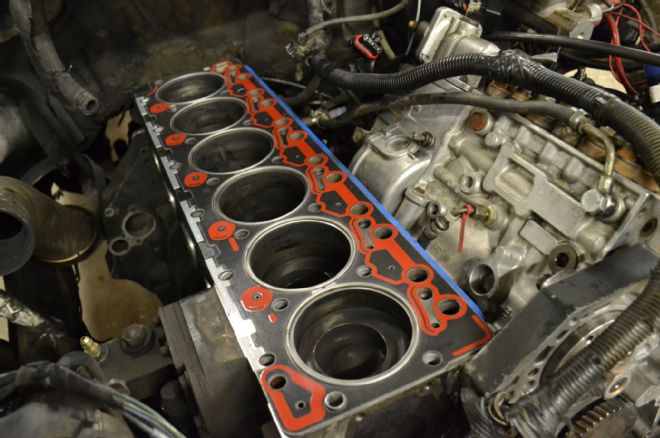

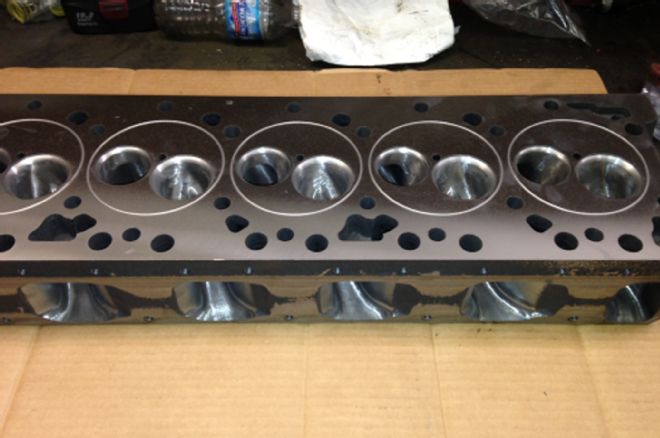
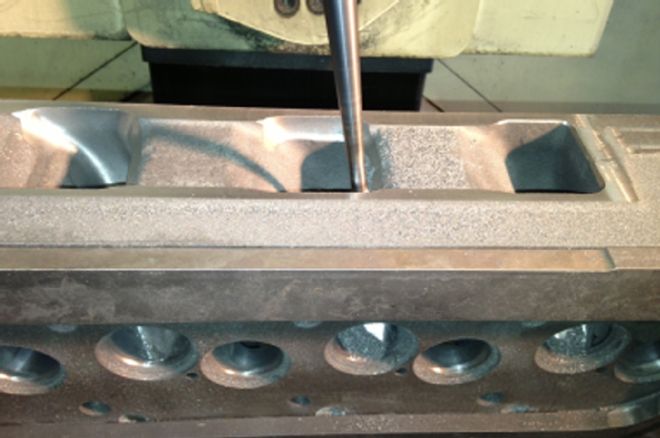
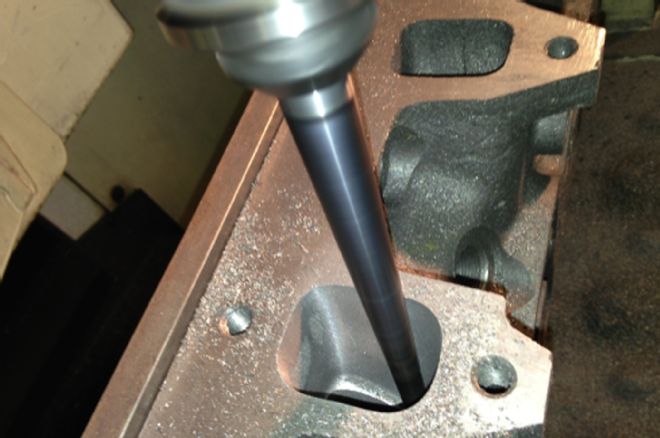

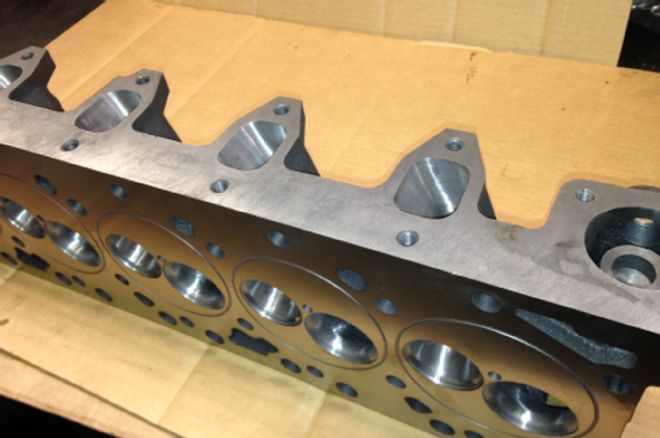
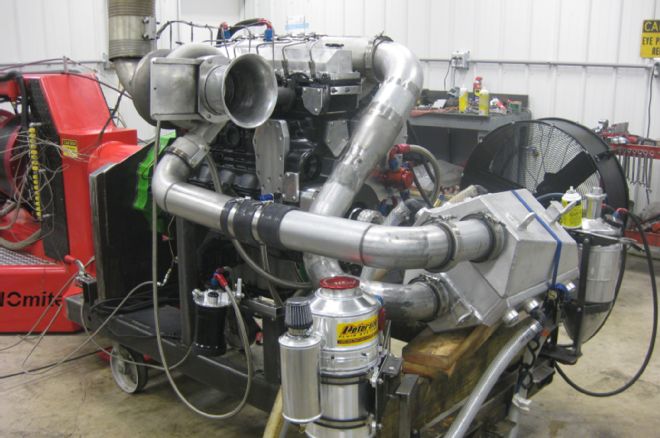
 | Hamilton Cams 12 Valve Cummins Cylinder Head 12
| Hamilton Cams 12 Valve Cummins Cylinder Head 12